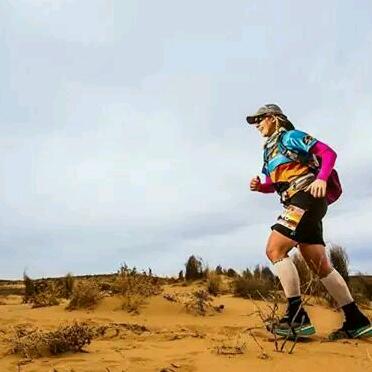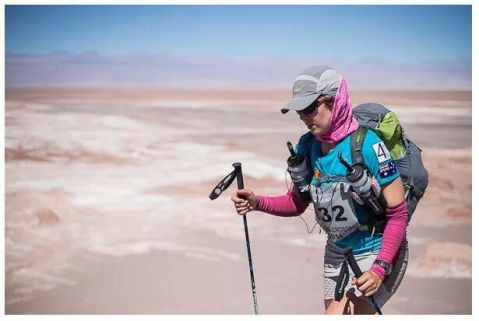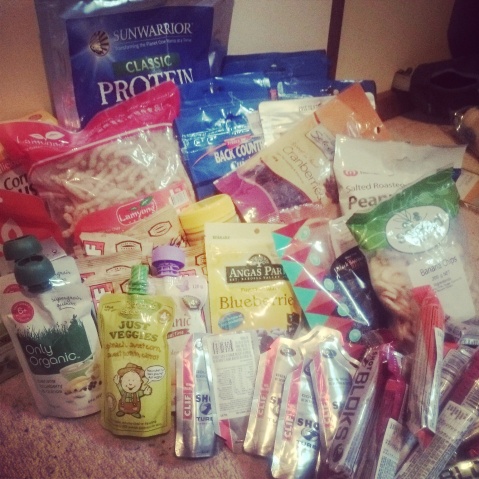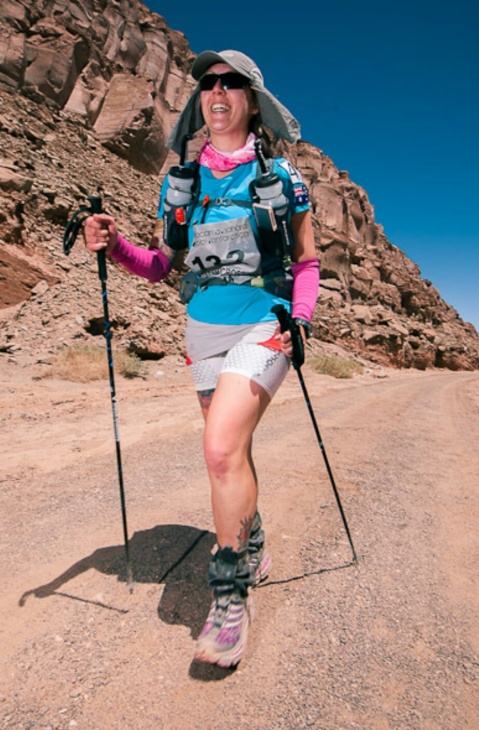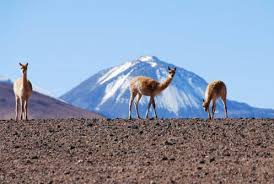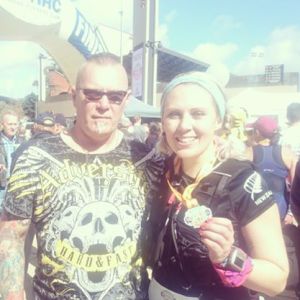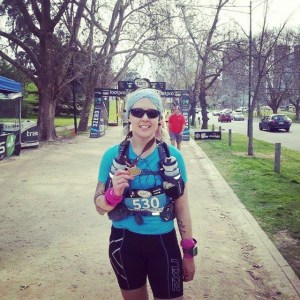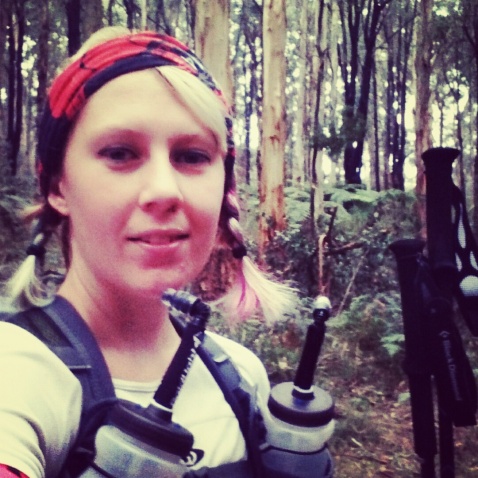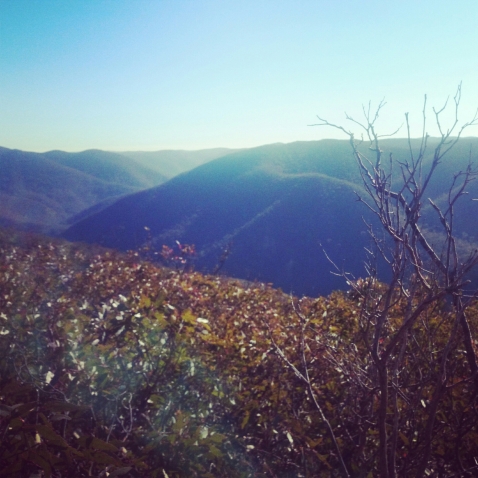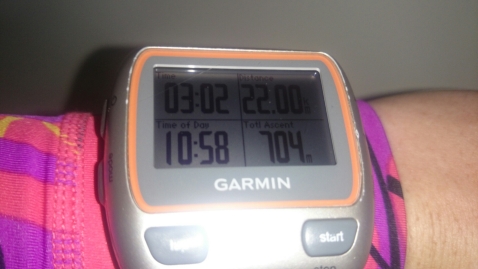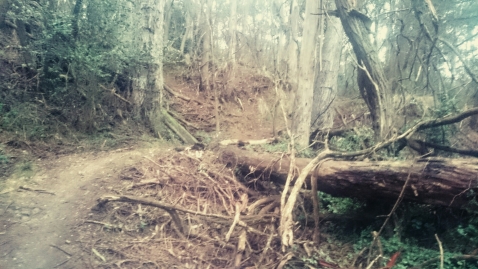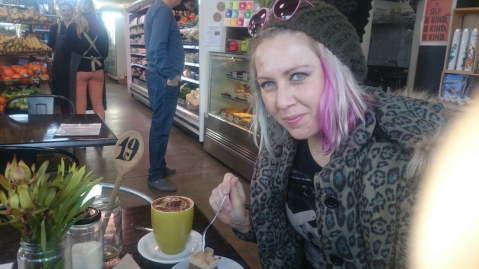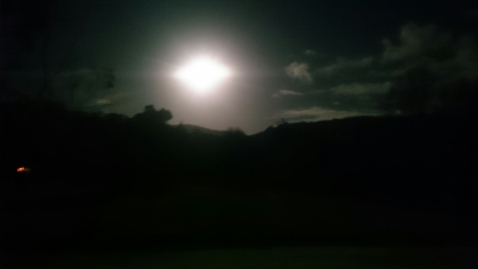Multiday racing: my tips for running a multiday event
First thing is first, I do not profess to be an expert on this topic. However when I entered my first multiday race, the Big Red Run (BRR) in 2013, the first thing I did was Google “multiday racing.” This strategy had served me well in my preparation for a half marathon, a marathon and even an ultra marathon so I assumed I would get something of interest. I was wrong. There was nothing. Not a thing!
So I spoke to as many people as I could about multiday racing, posted on CoolRunning and Facebook looking for tips, read biographies by runners who had run multiday events, I even looked at multiday cycling events for tips. Eventually, I stumbled on Bryon Powell’s book, Relentless Forward Progress. While he doesn’t specifically deal with multi-day racing, his book is a bible for any ultra marathoner and I was able to take a few key pieces of information from it and apply it to multiday racing.
In the end, a few things worked well and a few things really didn’t work at all.
This year, I entered and raced the Atacama Crossing. I was able to tweak those things that had failed me during BRR 2013 and in the end I was pretty happy with the choices I had made.
So what leads me to this blog is not that I suddenly consider myself an expert on multiday racing after only two events. What motivates me to write is the knowledge that there is absolutely nothing out on the internet or readily accessible for someone contemplating such an event. So I want to share with you what worked for me and what didn’t work so well. I emphasise the word ‘me’ here. What works for you might be very different and before I go in to my tips, I leave you with Dean Karnazes tip for multiday racing (taken from the extras clip in Desert Runners) “Listen to everyone, follow no one.”
Training
1. A 100 miler program is a good starting point.
I used a 100 miler program from Bryon Powell’s book. I then tweaked it to include the most important aspect of multiday training which leads me to point two….
2. Back to back to back runs.
Back to back to back runs are the single most important thing in training for a multiday race.
To begin with, I started with back to backs. That involved running anywhere from 20-40km on Saturday and backing it up on Sunday with a similar distance. The logic is that you need to get used to running on tired legs.
As you get stronger build up to back to back to back long runs. So for me, I would do 20-30km on a Friday after work (hitting the trails in the dark is also a great way to prepare for the long day where you will be out in the dark unless you’re super fast). Wake up Saturday and run another 30-40km. Then anything between 20-40km Sunday.
If I knew my motivation to run on Sunday was likely to be missing, I’d enter a race or plan to meet a friend so that I’d be accountable and make sure I got the session done no matter how tired I was. Remember, you’re going to be more tired than you could ever imagine running a multiday event – get used to running when you really don’t feel like it.
3. Train specific to the terrain
Really think about what this means. This was one of the things I didn’t do so well first time around.
BRR is a lot of sand, so every weekend, I would drive out to the Great Ocean Road to train on the beach. This was the most inefficient use of my time. Firstly, I was spending four hours return in the car – this was a waste of my precious time. Secondly, running on the sandy shore of Torquay did absolutely nothing to prepare me for the dunes of the Simpson Desert.
So, if you have dunes – go train on them, but for many of us who don’t live anywhere near the beach, all that driving is going to chew up time that you could be training, so focus on what is around you and how you can use that to mimic the demands of the terrain on your body. I live in the hills so I trained on those hills so I got stronger and better able to handle the ascents of the dunes. The rocky uneven terrain I used to mimic the uneven impact of the sand on my shonky ankles.
Second time around I didn’t bother with any sand training, I just ran all my miles on hills. By the time it got to race time, my legs were strong enough to handle the desert.
4. Hit the gym
You are going to be carrying that pack a very long way. You need to be strong to do this. As a runner you might have strong legs, but I bet your shoulders and back could do with a spruce up. You don’t have to start lifting like Arnie, but do some work to help your poor old shoulders out – they will thank you for it. While you’re at it, focus on your core strength too. That pack will make you its biatch if you don’t get strong.
5. Prehab is cheaper than rehab
Factor in recovery weeks during your training. Get friendly with a good myotherapist. Take your spikey ball with you everywhere and impress your work mates with your desk stretches – when they ask you what on earth you’re doing and you say you’re going to run 250km across the desert it gives you office credit to do what you like (two years later and I’m still working in a corporate office bare foot).
Food
1. Test everything!
You do not want to stock up on freeze dried food to find that on day three of the race, you cannot handle another mouthful.
On one or two of my back to back to back run weekends, I ate only what I planned to take with me out in to the desert. To rid myself of the temptation of the pantry, I went camping on these weekends. This made the whole thing a fun adventure and come race day, I knew exactly what foods I could tolerate whilst running back to back efforts.
2. Don’t confine yourself to the freeze dried prepackaged meals
I have food allergies and I am a vegan so none of those pre-packaged ready made meals work for me. This was a blessing in disguise. Both races, I have had to deal with the envious looks of other runners as they sit down to a breakfast of spag boll while I indulge in oats with cranberries and chia seeds.
Those pre-packaged things are loaded with garlic which can upset your gut when you run. By the sounds and smells coming from the porter loos, they’ll also either block you up completely or have you risking a “code brown.”
Here are some foods I took with me to the desert that worked really well (they’re all wheat free, fructose friendly and vegan):
– Corn cous-cous (though if you eat wheat or gluten you could opt for regular cous cous or spelt or khamut).
– Rice noodles
– Dried seaweed flakes (yummy and salty)
– Dried fruit (cranberries, blueberries and bananas)
– Textured vegetable protein (TVP – available at health food stores and most Asian grocery stores)
– Oats (soak overnight for easy digestion or use quick oats)
– Chia seeds and sesame seeds (both high in tryptophan which will help you sleep at night)
– Trail mix
– Vegetable chips
– Banana chips (Coles banana chips don’t contain honey)
– Sunwarrior protein powder
– Cliff bars
The only freeze dried foods I took were plain rice and a plain vegetable mix (no spices or added garbage).
Gear
1. Test everything!
Things will start to chafe in places you never thought could chafe. Test everything you plan to take with you and test them in racing conditions. For example, I have a Solomon skirt that I adore racing in. It’s great for ultras. However, after three days of running with no wash, the fabric created a weird rash on the outside of my thighs. I of course did not discover its ability to do this until day three of the Atacama Crossing. Had I just worn the compression shorts I had tested and planned on wearing right up until the morning before the race, I would have had one less rash to deal with.
2. Find a pack that suits your body type
Not many packs fit a female body well. I ended up using an Inov8 Race Pro 2 30 litre pack for the Atacama Crossing. I took out the back padding and replaced it with my Thermarest as I could inflate it slightly so that the back of the pack contoured into the shape of my spine. I then made a whole heap of changes to the pack which included adding front bottle holders so I could keep a better tab on how much I was drinking during the race and I cut off every loose strap as they not only add weight but they annoy the crap out of me when they flap about in the wind for 250km straight!
For an event like BRR, it’s not necessary to carry everything you need for the full week so you can get a smaller pack and that generally means you have more options. My advice on this one is try before you buy. I have four packs sitting in my gear closet right now and only two of them ever get used – the perils of buying online. One is too long for my torso and the other chafes my collar bones. If you’re going to be using that pack for 250km, it needs to be comfortable.
And make sure you start training with your pack early!
3. Buy big shoes
This was my biggest learning curve. For BRR, I wore shoes one size bigger than my normal size. Over the course of the week my feet swelled and by the final day, I could not take my shoes off for fear of not getting them back on. The result of swollen feet in tight shoes was disastrous. Had it not been for the amazing and creative medics at BRR, I would have had to drop from the race.
Second time around, I bought shoes two sizes too big for me. They were perfect. Minimal blisters and minimal toe nail carnage as a result.
4. Look after your feet
If you get a hot spot, stop and tape it. Read up on blister prevention before the race. Stock up on Hydropel and/or moleskin if that works for you. Take gaiters (sand will annihilate your feet) and make sure your sneakers are not the type that will let all the sand in through the front mesh of the shoe.
Don’t underestimate the importance of socks. My feet were such a mess during BRR and that was partly due to my sock choice. I wore Injinji trail socks with compression socks over the top. This worked great on training runs in the cold, wet Dandenong Ranges but was a nightmare in the hot Simpson Desert. This combination caused my feet to overheat. The compression socks were such a pain to get on and off that I ended up leaving hot spots because I just couldn’t be bothered to deal with them. They soon turned into nasty blisters on blisters on blisters.
Second time around, I wore Injinji liners and Drymax socks over the top. This was a great combination. I didn’t use any cream or powder to prevent blisters and my gaiters broke midway through the race. I had river crossings, sand and heat to contend with and only had four very small blisters by the finish and didn’t lose a single toe nail (compared to about a zillion blisters and no toenails at the finish of BRR).
5. Give poles a go (or not)
I didn’t take poles to the Simpson Desert. This was partly because I totally underestimated how slow I would be running at times and how much I would need to walk at times.
I decided to take poles to the Atacama Desert thinking I would only use them on the long day. I ended up using them from the very first to the very last moment of the race. They saved my back, helped me climb and kept me steady when I was fatigued.
To each their own – if you’re a fast runner and plan on running the whole thing, you certainly won’t need poles. But if you are a mere mortal, give them a go. Personally I loved them and wouldn’t do a desert race without them now.
6. Don’t be cheap on sleeping gear
I took only what I needed and I paid for it dearly. I was so cold during the desert nights of the Atacama Crossing that I didn’t sleep for any more than two hours a night. This just added to my fatigue and delayed my recovery.
If there is ever a “next time” for me, I will be investing in a warmer sleeping bag/liner and sleeping mat and warm clothes (thermals and jacket – I was cheap and nasty primarily because I didn’t want to ruin anything with a 4deserts logo, but in hindsight, a good night’s sleep is worth its weight in gold).
Such a lucky girl
I should be writing an essay right now. Actually, I should be at uni right now, but I decided to skip today’s tutorial on research and evidence in health science.
I fly out to Santiago, Chile at 6:40 on Sunday morning. I have been making lists, lists and more lists of things that need to be done before I go. This morning I realised that I was never going to tick everything off unless something went, so my uni tutorial had to go. Now, I should be writing my essay that is due Tuesday, but instead I am obsessing over fitting all my mandatory gear and food into my bag and running 250km across the Atacama Desert.
My good friend Duncan told me that life is like a stove top – you’ve got four hot plates, each representing a different facet of your life. It’s okay to supercharge one hot plate at the neglect of another from time to time, but you can’t expect to have all four hot plates firing at maximum heat all at the same time.
I have come to realise this week that not only are all my hot plates turned up to maximum heat, but I’ve got too many friggin’ hot plates!
I guess I just have to let the cooker burn now. I’ve probably ruined the rice, but if I can save the legumes I’ll be happy. Actually, I think the legumes are cooked to perfection.
So yes, life is madness, but when I reflect on the last few months of training and life, well I’m pretty happy.
Training has been spot on. No stone has been left unturned. The last three months my weekly mileage has been between 80-110km. Most weeks have been comfortably in the 90-100 range. That is really good for me. When I reflect on my training for Big Red, I only did one week of 100km. Every other week sat around 70-80.
CrossFit has been great in developing my overall strength and giving me confidence, agility and despite the myths that CrossFit is an injury prone sport (yes, it is if you do it WRONG), I have stayed injury free this whole training block.
I have incorporated altitude training, speed work and Bikram yoga into my schedule.
On reflection, I don’t think there is anything that I would change.
Despite the fact that my hot plates are all burning out of control, I’m so bloody happy. I have been trying to catch up with as many friends as possible in the last week before I fly out. As I walked down Brunswick Street on Wednesday night after dinner with my dear friend Jo, I thought, God I am so friggin happy!
A few years ago, Melbourne was a cold and lonely place for me. I had no idea who I was or what I wanted out of life. I felt totally lost – lost in myself and lost in this city of unfamiliar faces.
Now, Melbourne is home. I have wonderful friends, friends who I am so grateful to for their continued support, friends who inspire me every day and friends who I will miss while I am away.
In a couple of weeks when I’m trudging through the desert with a heavy pack on my back, sleep deprived, stinky, hot, uncomfortable and in a world of pain, I hope I have the strength to remind myself how lucky I am. How lucky I am to have wonderful friends, loving family and a supportive partner who just shrugs his shoulders and says “Oh your life” every time I tell him of my next adventure. How lucky I am to have a body willing and able to attempt such a feat. How lucky I am to do these things for fun! I am a lucky, lucky girl.
Four weeks until the big day
With four weeks to go until the Atacama Crossing begins, I realise it has been awhile between blogs. Life has been very busy and I literally have not had time to sit down and blog about what has been going on. So here is my update….
Training has been going very well. I have been averaging 80-110km a week running, three CrossFit classes and one Bikram class.
I found my training diary from the Big Red Run last year and I was really happy to discover that my training for this race has been much more solid. My weekly mileage is higher, my strength training has gone from two average sessions in the gym on my own to three to four intense CrossFit sessions and I have added yoga to the mix for a bit of prehab. Overall, I’m pretty happy with that.
What was also interesting comparing my Atacama Crossing training to Big Red Run was the comments I had made on rest days, energy levels, disruptions to training and general comments on mood and mojo.
It’s pretty evident that I really battled with the isolation and the depression that can follow from all the time I spent running solo in preparation for Big Red. Back then, I didn’t know any ultra runners. So all my training, all my miles were logged in isolation. Back to back to back runs of three plus hours were all logged on my lonesome. Those weekends I went out camping to test all my gear and run on a body that had slept on a hard floor – all done on my own.
In addition to training time done on my own, I became isolated from my friends and my social life. All my friends at the time were musicians. When you need to be in bed at 9pm so you can get up to train at 4.30am, your schedule doesn’t really work with the live band scene. As a result, I didn’t really see any of my friends for much of the six months I spent training for Big Red and toward the end I started to feel pretty bitter about that.
So let’s fast forward to Atacama Crossing training. The first few weeks of dedicated solid training were the hardest. I was a bit burned out from my very big first five months of the “Year of Whimsy” and following The North Face, I really struggled to get my mojo back.
Then I quit drinking and within a week or two, I was feeling on top of the world and really excited about the huge challenge I had set myself.
With four weeks to go until Atacama I can truly say I am the happiest I have ever been. I have really enjoyed the journey so far. I haven’t felt like I have made the same sacrifices as I did for Big Red. That is largely because running no longer detracts from my social life but has become my social life. I gave up working Friday’s and as a result, Friday has become my favourite day of the week. I have gone out running and hiking with old friends and new – day time and middle of the night (getting home at 3am after a night of hiking is so much more exhilarating than a night on the town!).
Saturday and Sunday runs have also been celebrated with company. Running with the Dandenong Trail Runners, celebrating ‘birthday ultras’ and getting up at 4am only to delay the start of our run hiding from ‘creepy creatures’ – well it certainly beats training for hours and hours and hours on your own.
Not all my runs are done in company. I still believe it is very necessary to go out for long runs and tough sessions on my own as when I am out racing in the desert, I will not have my social crew. However, having these new running friends makes me so happy and each and every one of them inspires me in new and different ways and that puts me in a great head space to go out and tackle 20, 30, 40 or even 50km out on my lonesome.
In the last couple weeks I also ran a few races.
The first race I did was Adelaide Marathon. I wanted to go home and visit my family before I fly out to Chile and as the Adelaide Marathon was on, I thought it would make a good training run. I had no intention of running fast. I just wanted to log the miles.
As I have never raced more than a half marathon in Adelaide, my family were pretty excited so Mum, Dad and Nanna came down to the finish line. Knowing they were waiting for me meant the world.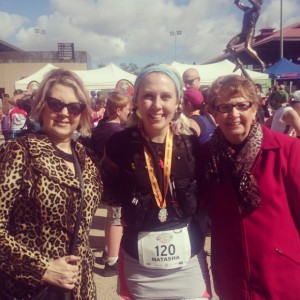
My Dad was a great athlete in his youth but injury and arthritis have impacted on his ability to enjoy the simplest of movements. Every race, every training run, every thought of running is always for my Dad as he is my inspiration. This race was special because knowing he was waiting at the finish line for me felt like I could really give him this race. The thought of running for my dad became that little bit more tangible.
As I ran along the Adelaide streets I felt at home, recalling memories associated with sights, smells and sounds. I was so happy when I crossed that finish line into the arms of my family and as a bonus, my second fastest road marathon time ever!
The next weekend was the Tan Ultra 50km. The day prior to this race I had gone out for three and a half hours in the Dandenongs with my big heavy pack. On race day, I decided it was best to run with 8-10kg in my pack in serious preparation for Atacama.
As the Tan is a loop track (the 50km being made up of 13 loops), I battled with the mental challenge of the course. I also battled with my ego. I knew I would be so much faster if I discarded my pack and every time I passed that aid station I battled with the urge to leave it there. But I knew that it was not my race and that if I finished the 50km with my pack, that that would give me the confidence I needed to go into Atacama knowing I was ready.
My dear friend Tay told me that the city folk at the Tan would think I was crazy. Well she was right, but what I hadn’t factored in was that crazy attracts crazy. On my third loop I had got myself a stalker. She wanted to come over, hang out, go running. She was ran with me for two laps and then started to badger me for my phone number (this was not a fellow competitor but just some city runner out for a jog). When we got to Anderson Hill I knew this was my chance to shake her so I ran up it as hard as I could and yelled out over my shoulder “nice to meet you!”
The other interesting note about the Tan was that the 10kg in my pack was made up of books. As a result I had gotten myself a reputation as the running librarian. So each time a competitor passed me, I was asked for my literary recommendations. It was a good way to pass the time
The best thing about the Tan however was having my partner Liam there. He doesn’t like to come to my events usually and that is understandable as ultra running is not really a spectator sport, but running loops like that meant he got to see me and chat with me each time I passed through the aid station. It was really motivating and helped lift me out of my mood.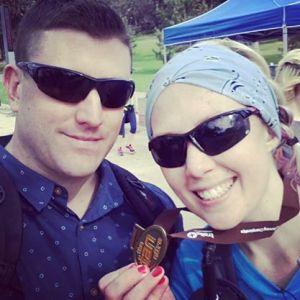
After six hours and ten minutes, I was done. Special thanks to Dion for keeping me company on my final loop of pain, on which I got verbal diarrhoea and talked and talked and talked about God knows what. Dion just smiled and nodded and plodded along until I got over that finish line – that is good mental training (you will smash that 100km now Dion!)
I have one more week of training before I start my taper. I hope to hit around 110-120km this week. My, time flies when you are having fun!
Happy Happy Joy Joy
This morning, one of my colleagues asked me how my weekend was.
“Absolutely fantastic,” I responded and I really meant it.
So what did I do with my three day weekend? Well Friday I met up with a woman I’d never met before. A mutual friend introduced us because of our love of nature and trails.
I stopped by her house at 8am and off we went for a day of trekking at Lerderderg National Park. I had never been to Lerderderg before so it was a bit of a treat. My new friend is quite pregnant so the idea was that we would just trek at an easy pace to keep her heart rate down. Well, somehow we got a little off track (I think that may have been my fault). After 2.2km of straight uphill we started to descend sliding down on our backsides holding on to rocks, tree roots, basically anything that would stop us from falling. That was when we realised we were no longer following a trail. Oh well, the fastest way down was straight down so that was what we did.
We knew we would get back to the car if we followed the river so that was what we did, criss-crossing whenever the terrain on one side became obsolete or just ridiculous. This involved about 14 river crossings.
At one stage, I thought we could rock climb our way around the bend of the river. I was wrong. I had to scale my way back before heading straight through the river. We had no choice but by this stage the river was waist high. As I had filled my pack with 8kg of books in preparation for Atacama, you can understand that I was a little hesitant about getting my pack wet, so overhead it went.
I had flash backs of my CrossFit coach saying “this is important for real life.” I had often wondered what kind of a “real life” he lived. Now I understood – you never know when you will need to carry 8kg of books overhead in a National Park to protect them from a gushing river – do your overhead work!
After 5 hours we made it back to the car. What a blast!
Saturday morning the alarm went off at 5:00 am. I snoozed for three minutes. It was all I could afford. Then it was straight out the door to meet a few Dandenong Trail Runners for a few loops through the Dandies.
Another great morning – 32km run in total. New friends made and a few hills conquered.
Then it was time for recovery and the best recovery in my view comes from a green smoothie and Seinfield repeats.
Many thanks to a very special, generous and kind myotherapist who worked her magic on me Saturday afternoon.
Sunday morning I had decided I needed to make sure I got eight hours sleep so I set the alarm for 7:00am. I knew I needed to do 20km to reach my weekly target of 90km.
3km in and I was tired.
I kept reminding myself how I would feel if I turned back, if I didn’t achieve what I had set out to do. The very point of back to back training runs is to train when you’re tired. I remember how tired I was on day three of the Simpson Desert run in 2013. There was no option of giving up then. One must learn to persevere. So on I went, slow (oh so slow) and steady.
When the Garmin beeped 10km I gave myself a mental high five. I knew I could turn back now. I wanted to teach my mind a little lesson though so I pushed on an extra 2km, then I took the 10km loop back home – 22km in total.
When I opened my front door, my partner Liam greeted me, “You okay?” he asked.
“Yeah, I’m just a little fccked.” I said.
Then I took the rest of the day off to watch more Seinfield.
Some reflections I made over the last three days:
– There is nothing I love more than trail running.
– Training for a goal as big as Atacama can be really isolating when all your friends are non- runners and don’t understand why you need to be in bed at 8:30pm and up at 4:00am.
– Training for a goal as big as Atacama is so much easier when your training becomes your social life (big thank you to all the people who have been happy to plod along with me the last few weeks on my long runs, old friends and new – Jan, Tay, Anna, Jacque, Celesta to name just a few).
– The journey to a race like Atacama is just as rewarding as crossing the finishing line. Every week, I make progress, I achieve things I didn’t think I could, I learn something a little more about myself, I get stronger.
– People are incredibly kind. When you strive to achieve something that is really hard and really important to you on a personal level – people will get behind you. They will help in whatever way they can. I am overwhelmed at the kindness I have received from people offering to lend me expensive gear, treating me so that I remain injury free, helping with sponsorship ideas, donating their hard earned cash to Animals Australia and supporting me and believing in me.
Yes, I am really enjoying the journey to Atacama.
ultra challenge
Training for any race has its difficulties.
It is usually the distance of an ultra-marathon that first Impresses someone.
“Wow, you’re gonna run 100km! In one day!”
“250km!”
Then it’s the challenging terrain or conditions.
“But someone’s going to transport your sleeping bag for you aren’t they?”
“Across the desert?”
“Sand-dunes?”
“Up a mountain?”
The reality is however, that whilst the race is always going to be challenging, it’s the months of preparation and training that go in to any race that are the real challenge.
For example, my first multi day race was the Big Red Run which was 250km across the Simpson Desert. It’s usually the 250km that impresses most people. However that was the fun part. What most people didn’t realise was that I had trained six months for that race. Six months of living and breathing BRR and nothing else. I carried my pack with me everywhere. I dreamed of sand, sand and more sand. I talked of nothing but running shoes, hydration systems, freeze dried food options and sports gels.
I had no social life because my weekends were spent doing back to back long runs and I needed what little sleep I could sandwich in between those runs.
The main challenges I had to deal with during those six months of training was saying no to friends – especially those friends who weren’t runners and couldn’t quite understand how or why bourbon swigging, all nighter Tash who never ever said no to a party was all of a sudden calling 9pm a late night; and injuries –plantar fasciitis (what a bitch).
I found a way of dealing with both of those challenges. The first challenge was dealt with by combining my fundraising targets for the race with my music. My music pals were quick to get behind me and help me put on a couple of massive fundraiser gigs that saw us belting out some tunes together and raising a shit load of cash for type 1 diabetes.
The second challenge – plantar fasciitis, it turns out, was cured by running 250km across the Simpson Desert. The more I run, the better that one works itself out.
My other big race was The North Face 100. Four months of training went into that race and I loved every minute of it. I trained throughout Summer and the warmer months and didn’t miss a session, that was until three weeks out from race day, I shifted the small bones in my foot which caused excruciating nerve pain with every step. I kept a positive mind set and enjoyed my extended and restful taper and come race day, I was good to go.
So now it’s Atacama.
I gave myself four months to train for this race – June till September with the race starting on 5th October. So I am two months into my training plan.
I had some pretty big goals given I have developed a really strong base over the last few years of running. My training hasn’t been too bad. In fact, when I look over my training log, it’s been pretty good. Last weekend was the only key session (my long run) that I have missed and given that the weekend before was the impromptu ‘Jan’s Birthday Ultra (52km with 1700m of ascent),’ well it was pretty understandable that I was feeling a bit tired. However, I feel like I have been letting myself down. I constantly feel like I should be doing more and this leads me to revealing my biggest challenge in this training block ….depression.
That’s right, the old dirty black dog. This is the first time I have had to train through Winter with a key race looming over my head. 2012’s key race was in July as was 2013 meaning I have had most of Winter to recover. Winter is the time of year I dread. It brings melancholy, fatigue and a sense of doom.
This Winter, the alarm goes off at 4:45am. It’s so dark out that no one can see the black dog trailing at my heels. It’s still dark when I finish my session and get ready for work. Sometimes, that filthy dog follows me all day.
Come 6pm, it’s dark again and it’s usually time for session number 2 (I either CrossFit in the morning and run at night or run in the morning and do some sort of cross training in the evening). Once again, that filthy dog is at my heels.
There have been morning’s I haven’t experienced my ‘runner’s high.’ On these morning’s I tick my session off in my training diary, but I don’t feel like I’ve accomplished much.
There have been a few mornings where I haven’t made it out of bed. I’ve let my running pals down on those morning’s I’ve arranged to meet them and I’ve let myself down because I haven’t done what I set out to achieve. I will always get the session done – that usually means being three hours late to work (I’m beyond any excuses anymore) and doing the session a little later in the morning or still being three hours late to work, eventually convincing myself that the world isn’t going to end, getting through what’s left of the work day then running at some absurd time of the night terrified that every noise in the bushes is a serial killer or rapist.
I have also put on weight this Winter. Not a great deal – 3 or 4kg and the truth is that it’s not making me any slower – I’ve timed myself. However the part of the self that lacks any sense of rationalisation thinks this also makes me a failure.
So there you go, the secret is out, Atacama’s biggest challenge is not the miles, not the altitude training, not the back to back’s, the lack of a social life or the lack of wine. Yes, these are all mini challenges in themself, but have nothing over the black dog.
So now that I have let the dog out of the bag, I will endeavour to treat it just like any other challenge – acknowledge it and work with it. It might mean that I need an extra rest day here and there. It might mean that I don’t hit all my goals and targets. However, it does not mean that I will back down and give up. I will keep training, I will keep pushing and I will show that dog who is boss.
I loooove da cake
Ohhhhh what a good weekend! Cake, pasta, chocolate, more pasta, wine, wine and wine!
Not really the way you prepare to run 250km across the desert. Yep, I even went without my long run. Oh well, shit happens. There are good training weeks and not so good weeks. If I were training for a cake eating competition then last week was a success, but I’m not.
In all seriousness it wasn’t terrible. Yes I skipped my long run, but I did manage:
– two runs with my heavy pack;
– my first altitude training session. This involved 10km of interval work at 2600m above sea level – all carried out on a treadmill with a gas mask;
– 3 Crossfit sessions
– My final week of a three week jnr Smolov cycle which has seen me squatting at 85-105% of my previous one rep max for 30 reps every second day;
– a few junk runs;
– a little sand run; and even
– a 1km swim.
So that’s my good news, but the truth is I did fall short of my weekly goal mileage.
So with 69 days to go untill Atacama it is time to stop making excuses and get on with the hard work – more altitude, more sand, more hills and more miles.
Less cake, less booze and less overcommitting to social pursuits at the expense of my training.
Strong is the new skinny
Strict pull ups at CrossFit this morning. My arms were hurting.
“I need a band” I said to my coach.
I did the first round of 21 pull ups following 21 hang clean thrusters and 21 deficit push ups assisted by one band. Second round and I yelled out for another band. My coach looked at me like he thought I was taking the easy option. Maybe I was but when the next round of thrusters was up, I could barely hold the bar. My forearms were aching.
I punched myself in the forearm a few times then just grit my teeth through the rest of the workout.
When the clock stopped my coach asked me how I felt. I said my forearms were hurting. He nodded like he thought they should hurt.
So I reflected over the last week of training – yes lots of running but that shouldn’t affect my arms.
Hmmm…maybe it was that moonlight night hike/run with my new trekking poles. I was out in the forest in the dark and every time I heard a shuffle in the trees I gripped my poles tight, ready to use as a weapon. I knew the noise was most likely a wallaby but growing up in Salisbury, I couldn’t shake the feeling that it could be a rapist or a murderer. Better to be prepared and grip those poles tight like fighting sticks than to regret it later.
Hmmm….what else?
Maybe all those renegade rows? Maybe the hundreds of power cleans I’ve been working on? Maybe the trillions of burpees (well not quite trillions :P)?
I have been freaking out just a little bit this week with the realisation that I only really have 10 weeks of solid training left before Atacama. I have so much work to do.
This race is not just about running. In fact running with that giant pack feels like a whole new concept of running. But in addition to the running I have to be strong – strong enough to carry all I need for an entire week on my back whilst running 250km across the driest desert in the world.
So back to my aching forearms. Well on reflection, I realised they were aching because I had worked bloody hard last week. I had challenged my body in new ways and I was sore for it – in a good way 🙂
As I lay on the floor of the gym, not quite recovered from today’s WOD but happy and admiring my, what I now envisaged as Pop Eye, forearms I thought about all the strong women I know – so many of them accomplishing great things this weekend (especially Tay). How honored I am to have such strong women to look up to and be inspired by. Why aren’t these women on the front of every magazine? On TV?
Why aren’t these women in the mainstream media and not just my facebook newsfeed inspiring a whole new generation of young impressionable girls?
I remembered a stupid ex boyfriend who once said my arms were too hard to be girl arms. What a dumb arse (I beat his sorry arse in an arm wrestle).
Strong is the new skinny you stupid stupid boy.
